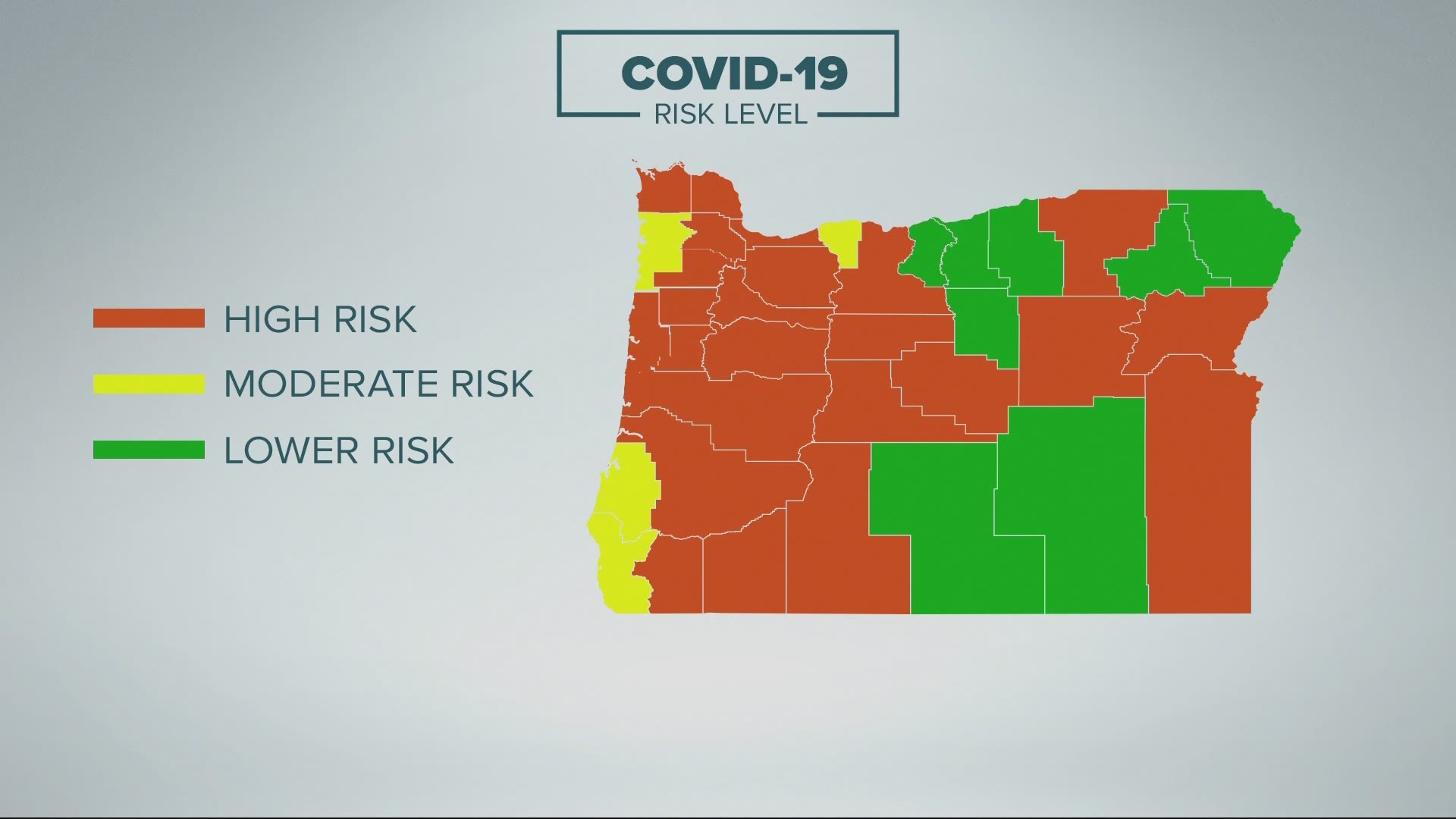SALEM, Ore. — All 15 Oregon counties that were in the extreme risk category have moved out of the extreme risk category of COVID restrictions. Gov. Kate Brown made the announcement Tuesday and the shift took place Friday.
That includes Multnomah, Clackamas, Marion and a dozen other counties that were moved into extreme risk last week. All metro-area counties have been downgraded to the high risk category.
The quick reversal came because the state did not meet one critical hospitalization metric that Brown required for any county to be in extreme risk. The rule stated there must be a 15% increase in the seven-day hospitalization average over the past week. Last week, Oregon only saw a 14.9% increase, according to the Oregon Health Authority.
Despite relaxing the rules, Brown stressed we're not in the clear yet.
“Across the state, COVID-19 cases and hospitalizations are still high, and Oregon is not out of the woods yet," Gov. Brown said in a release on Tuesday. "However, we have met the hospitalization metric established by our health experts for counties to return to high risk. From the beginning, I have said that returning counties to the Extreme Risk level was about preserving hospital capacity and saving lives. With our statewide hospitalization rate stabilizing, our hospitals should have the capacity to continue treating patients with severe cases of COVID-19 and other serious medical conditions in the coming weeks."
Based on the numbers released Tuesday, Brown said she would keep her commitment to Oregonians and return all counties in extreme risk to high risk.
"With Oregonians continuing to get vaccinated each week, my expectation is that we will not return to Extreme Risk again for the duration of this pandemic," the governor said.
RELATED: Restaurants, sports fans rejoice as governor moves Oregon counties out of 'extreme risk' level
The updated risk levels will be in effect through Friday, May 13:
High risk (24 counties)
- Baker (Moved from Extreme)
- Benton
- Clackamas (Moved from Extreme)
- Clatsop
- Columbia (Moved from Extreme)
- Crook (Moved from Extreme)
- Deschutes (Moved from Extreme)
- Douglas (Moved from Moderate)
- Grant (Moved from Extreme)
- Jackson (Moved from Extreme)
- Jefferson
- Josephine (Moved from Extreme)
- Klamath (Moved from Extreme)
- Lane (Moved from Extreme)
- Lincoln
- Linn (Moved from Extreme)
- Malheur (Moved from Moderate)
- Marion (Moved from Extreme)
- Multnomah (Moved from Extreme)
- Polk(Moved from Extreme)
- Umatilla
- Wasco (Moved from Extreme)
- Washington
- Yamhill
Moderate risk (4 counties)
- Coos (Moved from High)
- Curry
- Hood River (Moved from High)
- Tillamook
Lower risk (8 counties)
- Gilliam
- Harney
- Lake
- Morrow
- Sherman
- Union
- Wallowa
- Wheeler
“I know this will bring relief to many across the state. However, the lifting of extreme risk health and safety measures comes with great personal responsibility for us all," Gov. Brown said. "If Oregonians continue to keep up their guard, follow high risk health and safety measures, and get vaccinated as fast as possible, we should see our COVID-19 case and hospitalization rates decline."
In counties in the high risk category, the following activities will be allowed, with health and safety protocols in place. For a complete list of rules for every risk category, see the Sector Risk Level Guidance Chart below:
- Indoor social gatherings have a limit of 6 people, outdoor have a limit of 8
- Indoor dining is allowed but takeout is highly recommended
- Indoor dining capacity cannot exceed 25% or 50 people, whichever is smaller
- Outdoor dining is allowed but is capped at 120 people
- Indoor entertainment establishments can operate at 10% maximum occupancy or 50 people total, whichever is larger
- Indoor full-contact sports are allowed with guidance requirements
- Retail stores can have 50% capacity and curbside pickup is encouraged
- Faith institutions can allow 25% occupancy or 150 people indoors, whichever is smaller, or 200 people outdoors
- Offices are encouraged to continue remote work if possible
Read the full list of rules for each risk category below:
WATCH: COVID-19 updates and stories

